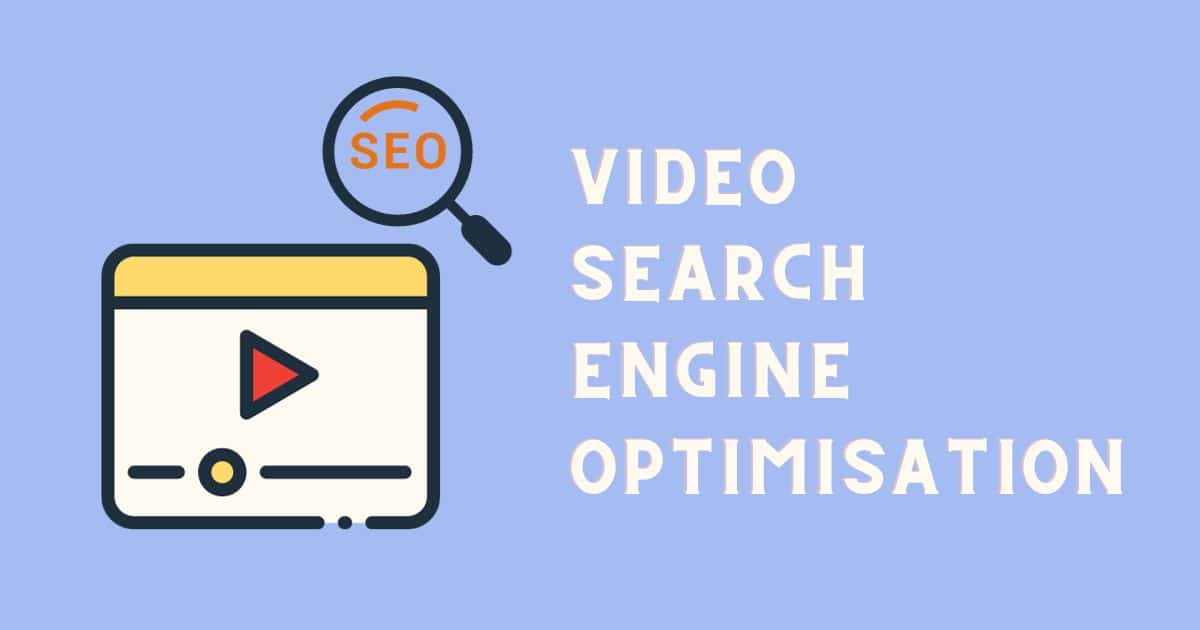What Does Video SEO Mean?
Video SEO refers to the process of fine-tuning your videos to ensure they appear in search engine results when specific keywords are entered. This involves creating video descriptions and tags that align with the interests of potential viewers and producing video content that attracts traffic.
The presence of videos can significantly impact a crucial factor in SEO rankings. Web crawlers don’t directly comprehend the content within videos, which is why it’s vital to employ tags and metadata to guide them towards your video.
How Video SEO Has Evolved Over Time?
In recent years, video content has emerged as a crucial component of content marketing strategies. Many businesses are actively striving to produce a wide range of video content. Videos offer a unique level of flexibility and value that is often unparalleled by other content formats.
Videos not only engage your target audience but also play a significant role in enhancing your online visibility and SEO. Back in 2003, Google introduced a new search algorithm known as Hummingbird, shifting the focus from keywords to user search intent.
When you enter a search term, Google’s algorithm is designed to display at least one video that incorporates the same keywords as shown below.
Nowadays, with numerous tools available for creating impressive videos across various budgets, businesses are making a concerted effort to capture their audience’s attention through video content. Video SEO has gained increased importance in this landscape. Google, too, has evolved over the years, leveraging machine learning and vast data resources for processing information.
Your primary task is to assist Google in ensuring that your videos are enticing to users, encouraging them to click and engage.
How Can You Do SEO for a Video?
Pick the Right Video Hosting Platform
When selecting where to host your videos, consider your goals. Do you want more site traffic and leads, or are you aiming for brand awareness? Platforms like YouTube and Vimeo are better for general brand exposure, but keep in mind that most traffic will stay on these platforms, not your website.
If you’re focused on driving on-site traffic for lead conversion, explore alternative hosting options. For example, Wistia automatically adds SEO metadata (like JSON-LD) to improve indexing chances.
Include a Video Transcript
Video transcripts not only make your content more accessible but also enhance search bot indexing. They act as indexable text that can help your video rank for more search queries, especially for longer-form videos that are the main focus of a page.
Below is an example of a video transcript. The table format provides a structured way to present a video transcript, including timestamps, speakers, and the text of the spoken content. You can customise this template based on your specific needs and the content of your video.
| Timestamp | Speaker | Transcript Text |
|---|---|---|
| 00:00:05 | Speaker A | Welcome to our Video SEO masterclass. |
| 00:00:20 | Speaker B | Today, we’ll explore the key strategies for optimizing video content for search engines. |
| 00:01:10 | Speaker A | Let’s start with the importance of keyword research. Researching and selecting the right keywords is crucial for Video SEO success. |
| 00:02:15 | Speaker B | That’s right. You want to identify keywords that are relevant to your video and have a reasonable search volume. Next, let’s discuss video titles and descriptions. |
Ensure Page Relevancy and SEO Optimisation
Video optimisation should go hand in hand with page optimisation. An inadequately optimised page can hinder video ranking. High-quality content and proper technical SEO are essential for improving rankings.
Optimise Title and Description
Crafting engaging video titles and descriptions is essential for video SEO. Perform keyword research to target relevant search queries. Avoid keyword stuffing; instead, focus on creating clickable and interesting titles and descriptions.
Create an Attractive Thumbnail Image
Your video’s thumbnail is the first thing viewers see when it’s indexed. Make it compelling, relevant, and visually appealing, similar to a book cover or website homepage. A captivating thumbnail can significantly boost click-through rates.
Prioritise a Single Video per Page
Google usually indexes only one video per page. If you have multiple videos on a page, make sure the most important one comes first. Focusing on a single video per page increases its chances of ranking.
Highlight Your Video on the Page
To boost your video’s crawlability and visibility, make it the central focus of the page. Avoid burying it below the fold, as this can lead to lower play rates and decreased indexing.
Avoid Embedding the Same Video Multiple Times
Embedding the same video on multiple pages can create unnecessary competition against yourself. If the video is relevant to a page, avoid embedding it elsewhere on your site.
Diversify Promotion Beyond SEO
Relying solely on SEO for video promotion is not a guaranteed strategy. Search algorithms change, and video trends evolve rapidly. Don’t depend solely on search bots to drive viewers to your videos; explore other promotion avenues as well.
Benefits of Video SEO
Expanded Brand Reach
Hosting your videos on platforms like YouTube or Facebook opens the door to a massive global audience, reaching billions of people worldwide. Optimising these videos for SEO increases the likelihood of connecting with viewers in distant corners of the world. This is an opportune time to harness the power of videos.
Audience Connection
Videos effortlessly engage audiences and foster emotional connections. They simplify complex concepts, making them accessible to all, and can convey information while evoking emotions. SEO-optimised videos are more likely to reach your intended audience, bringing you closer to them.
Enhanced Customer Engagement
Optimised videos encourage audience interaction, increasing the chances of achieving your desired outcomes. Metrics like play rate, view count, shares, and comments provide insights into audience engagement. Encourage viewers to like and comment on your videos to boost engagement.
Improved ROI
Creating purposeful and resourceful videos with SEO elements can yield better returns on investment. According to HubSpot’s State of Video Marketing report, 87% of marketers are satisfied with the ROI generated by videos.
Visibility in Search Results
Video optimisation directly impacts its visibility in search results. Well-optimised videos are easier for search engines to index. Google aims to provide users with the content they seek, and many prefer video explanations over lengthy articles. Effective video optimisation can secure a top position in search results for specific queries.
Generating Leads
An optimised video not only enhances the viewer’s experience but also encourages them to become leads if your solution aligns with their needs. An optimised video reflects your brand’s commitment to quality, which positively influences how you treat your customers.
How Do YouTube Algorithms Work?
With YouTube being the largest video platform, let us discuss how the algorithms work.
YouTube’s algorithms are at the core of how content is discovered and recommended on the platform. These algorithms are designed to personalise the user experience and keep viewers engaged.
Video Recommendation Algorithm
- Watch History: YouTube tracks your watch history to understand your interests. It recommends videos similar to those you’ve previously watched.
- User Engagement: The algorithm factors in your likes, dislikes, comments, and shares to gauge your engagement with videos.
- Video Information: Metadata such as video titles, descriptions, and tags are considered when recommending content.
- User Demographics: YouTube takes into account your age, location, and language preferences to tailor recommendations.
Home Page Recommendations
The subscription feed shows videos from channels you’ve subscribed to in chronological order.
However, YouTube sometimes uses algorithms to curate this feed, which can lead to occasional non-chronological content.
YouTube Search Algorithm
When you search for a topic, YouTube ranks videos based on relevance, user engagement, and other factors. Video titles, descriptions, and tags play a role in search rankings.
Recommended Videos Sidebar
As you watch a video, the “Up Next” sidebar displays recommended videos. These are chosen based on your current video and viewing history.
Notification Bell
Subscribers who click the notification bell receive alerts for every new video uploaded by a channel they follow.
Trending Tab
The “Trending” tab showcases videos that are currently popular or viral. These selections are influenced by high view counts and engagement.
YouTube Shorts and Stories
Short-form content in YouTube Shorts and Stories also relies on algorithms to surface relevant videos to viewers.
User Feedback
YouTube encourages users to provide feedback on video recommendations. You can indicate if a recommendation is not relevant or if you’re not interested in a particular topic.
Content Moderation
YouTube employs algorithms for content moderation to identify and remove videos that violate its policies.
It’s important to note that YouTube’s algorithms are continually evolving. They are based on machine learning models that analyse vast amounts of data to improve video recommendations and user satisfaction.
Leverage Video SEO for your Website
The rise in online video popularity offers a significant opening for SEO professionals who are ready to think outside the box to achieve success. While creating videos may not always come cheap, it often turns out to be more affordable than what people initially assume.
If you’ve previously promoted infographics, you’ll likely discover that you can comfortably budget for producing a marketing video and implementing Video SEO that will yield a favourable return on investment for either yourself or your client.













